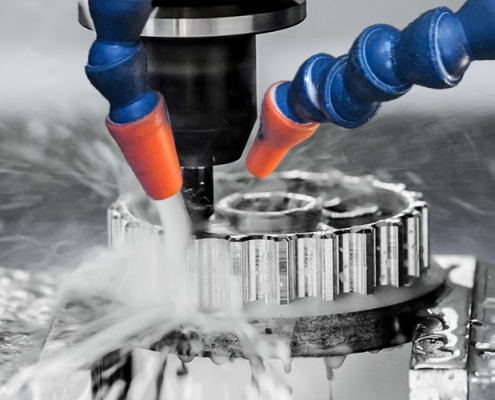As it happens with any piece of technology CNC machines, require preventative maintenance to prevent any mistake. Thinks about it for a moment; this piece of machinery has a lot of moving parts that also tend to degrade with continuous use. This is no different than taking care of a car. Not doing preventive maintenance to this type of equipment certainly shortens their lifespan quite a bit. The way to tell that maintenance is needed is mostly done by the CNC machine itself, since they have their own set of signals that get fired up when something is not working as it should.
As a business owner in the CNC machining business, you certainly don’t want to avoid paying attention to these signals. Ignore them, and you will be losing money in the short run. Take a moment to see it from a broad perspective by following the same principle of the car we mentioned earlier: If your vehicle sounds weird and all the lights that are usually quiet turn on at the same time, you should do something about it. Common sense demands that you take it to a mechanic. The same principle applies to your CNC machine.

cnc machining*
Managing Daily CNC Machining Maintenance Tasks
Take a moment to pay attention to your CNC machine. Even if you are not a specialized technician, you should be able to perform a few easy tasks every day to make sure everything works the way it should. You may want to check the hydraulic pressure of the moving parts, or the presence of fluids to make sure that your machine is operating as it should.
You can also check thing like the chuck pressure, the lubrication levels, the cooling system, and all the nuts and bolts that need cleaning from time to time. Taking notice of the grease that is required in certain parts is also essential. If your machine has a filter, this one should be cleaned once every forty hours.
The short version is that your machine should be taken care of by a technician daily.
Managing Periodic CNC Machining Maintenance Tasks
The Periodic maintenance tasks for a CNC machine should happen after five hundred hours of use or three months. The common checks after this time include a revision of the chain located on the chip conveyor, that section should be greased any time that is possible to do so. The filters placed on the coolant tanks should be cleaned as well.
After 1000 hours you may need to do a bit more tasks than the ones we already mentioned. Most of these are carried out by an engineer or a distributor technician. This time around the coolant tank needs to be cleaned out of oils, chips, and any form of sludge. The chuck, as well as the jaws, needs to be removed from the CNC machine and cleaned up.
Also, the hydraulic oil of the CNC machine needs to be changed. The tank that contains it must be drained and cleaned as well. After the tank is emptied and polished, the line and suction filters need to be changed. Last but not least the radiator has to be cleaned on this time mark as well. Checks need to be made to make sure that all the fins are positioned as they should.
Your machine has a lubrication unit that should be cleaned and drained after six months. The cooling unit needs to be removed, cleaned and refilled. After a thousand hours, you need to check the leveling of your CNC machine for the first time and make the necessary adjustments. If your machine has a set of wipers, they should be inspected for any damage and changed if needed.
Managing Annual CNC Machining Maintenance Tasks
After two-thousand hours of work, your CNC machine needs a lot more in the maintenance department to keep working as it should. Most of these tasks, however, should be handled by the engineering department of the company or by a technician of the distribution company.
For starters, the headstock of the CNC machine needs to be examined while looking for taper. The spindle also needs to be checked and search for any end or radial play. The chuck cylinder needs revision to check if it’s running out, as well as the tailstock for taper.
The levels of parallelism, as well as the inclination of the turret, need massive revision this time around. The technician or engineer needs to run tests on the software checking for the accuracy of the axes handled by the machine.
Every single piece of advice we just listed must be taken seriously when it comes to preventative maintenance of any CNC machine. As a business owner, you need to make sure that your operation runs smoothly. The revisions do take time, and you probably are not comfortable with a long pause on your operations. Consider for a minute that the alternative could cost you hundreds of dollars if you stop all the work because of a mandatory shut down on behalf of nonworking equipment.
reference
*Image from on https://enterprisetd.com/
